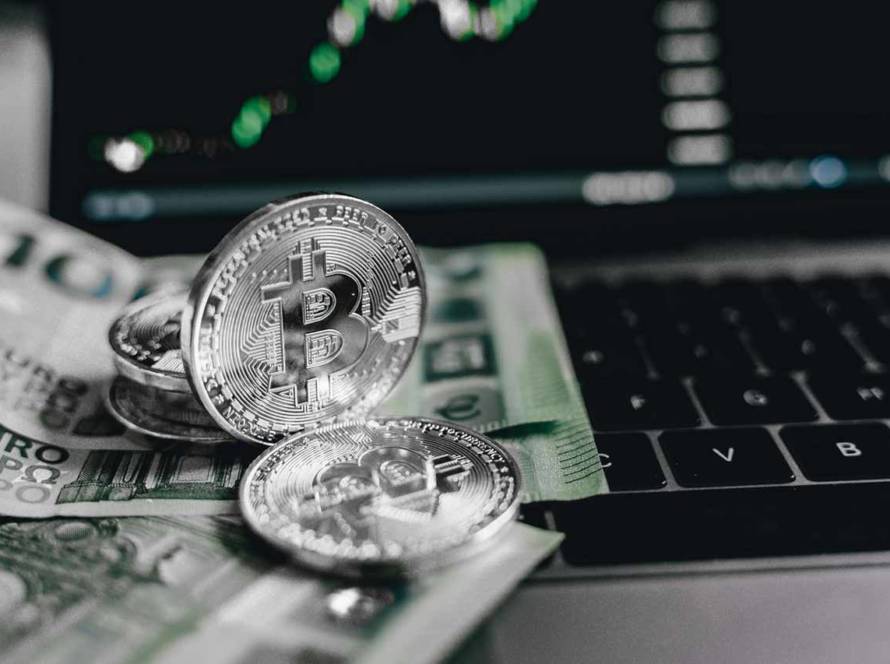
Vitally reliant on constant and stable electricity, the digital mining industry can benefit greatly from the integration of renewable energy and sustainable technology.
The Potential for Crypto Mining
Sustainable technology and digital mining both stand to gain from a symbiotic relationship. Vitally reliant on constant and stable electricity, the digital mining industry can benefit greatly from the integration of renewable energy and sustainable technology.
Crypto miners can take a page out of Google’s playbook for its Nevada Data Centre Campus, which seeks to become truly carbon-zero by relying purely on clean renewable energy. The tech giant looks to become the first hyperscale cloud operator to use heat generated by the Earth to power its servers 24/7. In the same way, crypto miners can fully integrate with renewable power facilities to gain stable access to green energy. Large hydropower has displayed strong potential for this use case.
Independent studies have shown that seasons of heavy precipitation are closely correlated with increased hydropower generation. In periods where precipitation rises by 43 per cent, hydropower generation can rise by up to 39 per cent. This increase in power generation is a boon for Bitcoin miners, whose largest operational cost is electricity. Leveraging low-cost electricity allows digital miners to maximise their operational gains and aligns them to international ESG goals.

Leveraging low-cost electricity allows digital miners to maximise their operational gains and aligns them to international ESG goals.
Already a substantial share of Bitcoin mining is powered by renewable energy, with large hydro power leading the way.
According to a study by the University of Cambridge Judge Business School, 39 per cent Proof-of-Work (POW) mining is supported by renewable energy. This is higher than the share of renewables in global electricity generation in 2019, which stood at 25 per cent.
One concrete example of renewable energy and crypto mining working together is a newly-established partnership between Bitcoin miner Compass Mining and nuclear fission company Oklo. Under the freshly inked deal, Oklo has agreed to supply the crypto company with 150 MW of low-cost, carbon-neutral electricity for 20 years.
The first reactors from Oklo are planned for deployment by 2023 or 2024. Once plugged in, Compass Mining will benefit from ‘considerably’ less power costs compared to its current sources. Not only that, but its operations will also be largely free of carbon emissions.
Renewable energy integration also opens the opportunity to integrate nascent and under-developed green technology. One case for this is the use of hydrogen fuel cells to ensure low-cost electricity is maximised. Microsoft has already outlined the use of hydrogen fuel cells to power its large data centres in lieu of diesel generators in its 2030 carbon negativity plan. Crypto mining farms can be outfitted in the same way.
In cases where power generation far exceeds the consumption rate of connected digital mining farms, excess electricity can be collected and stored in hydrogen fuel cells, either as a means to support periods of increased operation or as a back-up power source in case of emergency outages. This means crypto mining operations can always have stable, low-cost backup electricity at hand.
Meanwhile, renewable and sustainable technology development can gain momentum by being paired with an economically attractive investment vehicle such as crypto mining.
The Potential for Renewable and Sustainable Tech
At the moment, one of the main challenges of wide-scale renewable energy adoption is high up-front investment costs. The typical price tag on the installation of largescale solar power systems is around USD 2,000 per kilowatt, while the cost for a new gas-fired plant is USD 1,000 per kilowatt. This steep upfront cost makes investors and lenders think of renewables as high risk, whereas they find fossil fuel plants more acceptable due to their low installation costs.
However, when paired with a highly profitable business such as crypto mining, suddenly renewable energy integration becomes a viable – and even attractive – investment. Building out solar or wind power projects in remote locations makes financial sense when connected with digital mining facilities, as Bitcoin mining would allow for faster payback on upfront investments. Connecting Bitcoin mining facilities to solar and wind power farms also solves one of the main challenges to widescale implementation of these renewable energy sources – intermittency.
Sunlight is available during the day, while winds tend to blow more heavily at night. As such, energy supply is either highly abundant or non-existent at certain timeframes. Meanwhile, electrical demand is discovered to peak around late afternoon or early evening when people arrive home and turn on their appliances.
One of the current solutions to intermittency and oversupply of renewable energy is curtailment of power production. This is a process where power output is deliberately reduced below what could have been produced to balance energy supply and demand. However, this strategy fails to truly maximise the production capacity of renewable energy facilities.
By combining Bitcoin mining farms with hydrogen fuel cells and renewable energy sources, low-carbon power can be generated, collected, and stored during periods of abundance without curtailment. This level of integration translates to several outcomes:
Firstly, it improves the returns for renewable project investors and developers, thus making solar and wind projects profitable. This can prompt the acceleration of green technology development and production, thus causing a reduction in price.

Bitcoin miners can stand as early off-takers of the energy generated by solar and wind power projects until selling to the grid becomes viable.
Secondly, it allows for the construction of solar and wind projects even before lengthy grid interconnection studies are completed. Bitcoin miners can stand as early off-takers of the energy generated by solar and wind power projects until selling to the grid becomes viable.
Thirdly, it provides the grid with readily available low-cost “surplus” electricity for unexpected power outage events caused by spikes in demand due to extremely hot or cold conditions (e.g., the early 2021 power outages in Texas). One example of this is Riot Blockchain, which has a ten-year contract to buy all the electricity it needs for digital mining at discounted rates in exchange for participation in demand response.
Put simply, as part of its agreement with the power grid operator, Riot has the option to resell all its power to the grid in times of peak power demand, essentially functioning as a ‘virtual power plant’ in times of crises. This was put to action during the recent Texas freeze, when the company shut down its operations in Rockdale for two days to accommodate the spike in demand. Assuming it earned the peak price of $9/kwh, this translates to a $90 million windfall for the company.
Final Thoughts
In view of the potential economic and environmental impacts outlined above, we can surmise that digital mining and sustainable green technology can both advance from proper integration of technologies and processes. Pairing renewables with digital mining can fuel the expansion of low-carbon energy in the electricity mix. It can also make large scale deployment of renewable energy and other low-carbon technologies more affordable. As renewable energy becomes more economically viable, this can open exploration of other sustainable innovations such as desalinating water, removing CO2 from the atmosphere, or producing green hydrogen.
On the other hand, the greening of the global digital mining industry can ultimately lead towards a renewable-dominated global hashrate. This effectively removes one of the final major barriers to the proliferation of cryptocurrency as the future of finance. Combined with decentralisation and geo-diversification, green-powered bitcoin mining strengthens the position of Bitcoin in the financial ecosystem as a stable and secure means of transaction for everyone.



